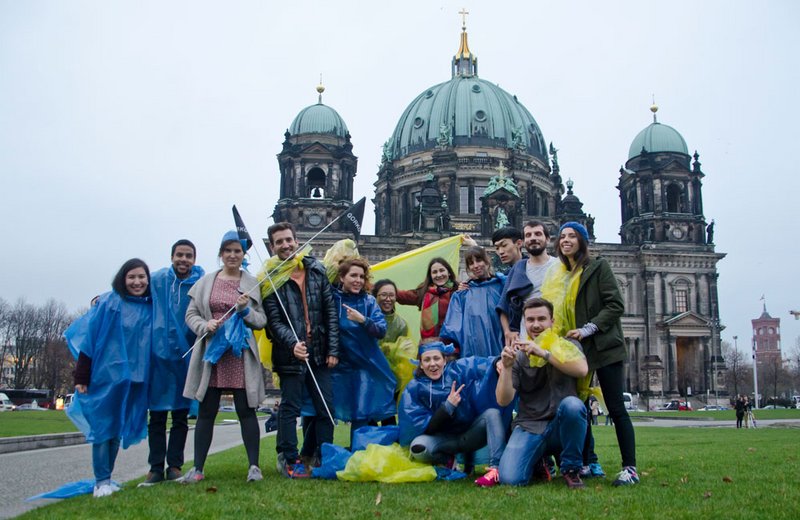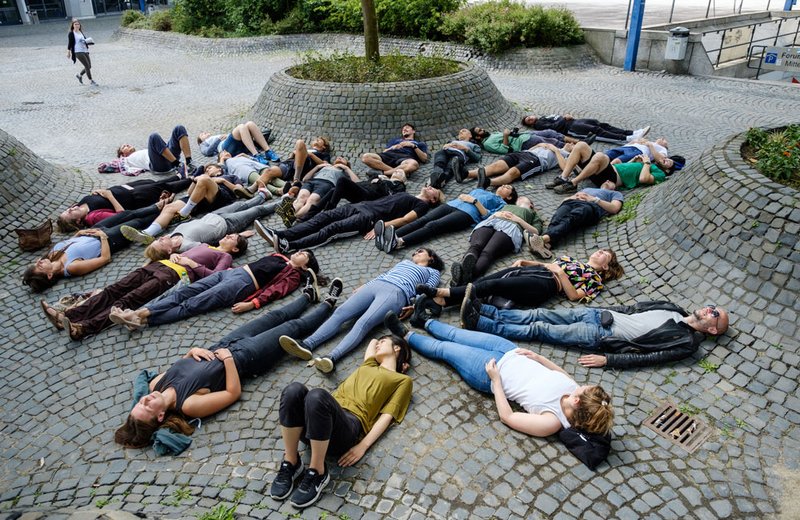Since 2015, the IMAGINARY BAUHAUS MUSEUM project has been tackling the social, economic and political issues of the present at selected exhibition stations in order to imagine 168 artistic works for a future Bauhaus collection.
As opportunities reveal themselves, the project series will expand into forthcoming iterations that confront situations, spaces and global challenges that are not yet known to us. Future students, alumni and teachers of the international MFA program will have the opportunity to take up the momentum for research and experimentation in order to test how the utopian potential of the Bauhaus can be activated for a museum collection of the future. The IMAGINARY BAUHAUS MUSEUM is dynamic, open-ended and progressive; we look forward to updating this website with the new strategies, artistic formats, ways of seeing and acting that prospective editions will inspire.
IMAGINARY BAUHAUS GOES GORKI
The first venue of the museum’s collection of the future was created by the teachers, students and alumni of the international Masters programme in the context of the exhibition 2. BERLINER HERBSTSALON 2015 in Berlin. At the invitation of the Maxim Gorki Theater they created a sort of social utopian space for radical diversity, for artistic work and research, on the controversial issues of our time. Questions of flight and migration as “World Cultural Heritage” which also shape the historical heritage of the Bauhaus were addressed. As part of the exhibition interventions, participatory installations and performances involving an interested public emerged in and around the Gorki Theater, the Palais am Festungsgraben and the surroundings of these buildings. Fields of action were opened through artistic means, individually and collaboratively, and new forms of knowledge production were developed which deal with themes of flight in the museum of the future.
The daily changing programme included a selection of already realised works by alumni as well as lectures and discussions under the direction of the cultural scientist Dr. Boris Buden.





Under the title CHE BELLA BRUTTA!
A temporary artistic production facility was built on the campus of Ruhr-Universität Bochum (RUB) with the students in 2018. After an introductory lecture on the architecture of brutalism, the project was dedicated to the development of site-specific artistic approaches on the contrasts of RUB’s architectural stages. RUB was conceived in 1948 as a beacon of the new start of educational policy after the war. An architectural competition was advertised for the new university in 1962, in which Walter Gropius also took part.
From 1964, the building complex designed by the architectural firm Hentrich, Petschnigg & Partner was built in the middle of the working-class area of the Ruhrgebiet. Described by Helmut Hentrich as a „harbor in the sea of knowledge“ then condemned shortly thereafter as an anonymous learning factory and concrete castle with suicidal qualities, the RUB was and is a significant symbol of its epoch. In different artistic forms and media, performative or participatory actions and interventions, the university building was artistically explored.





